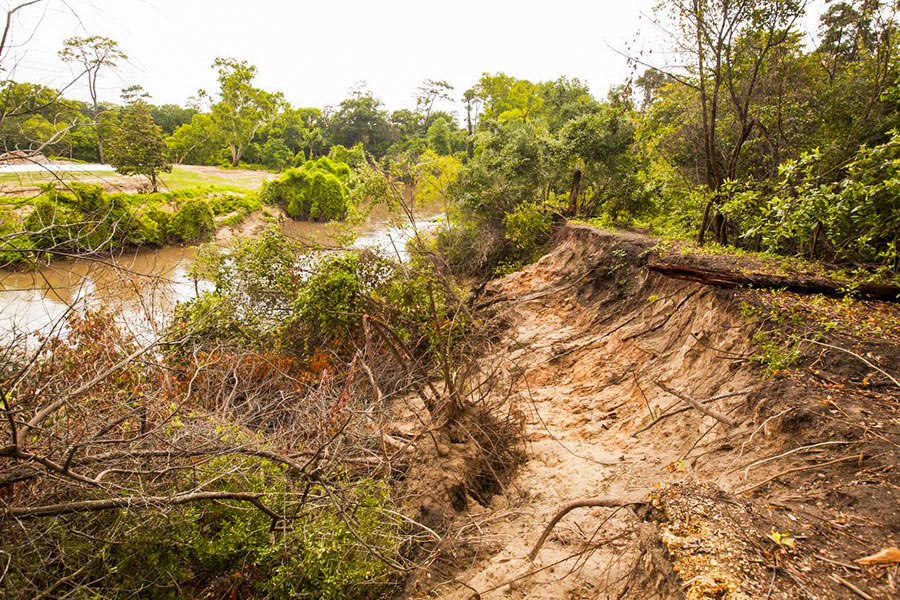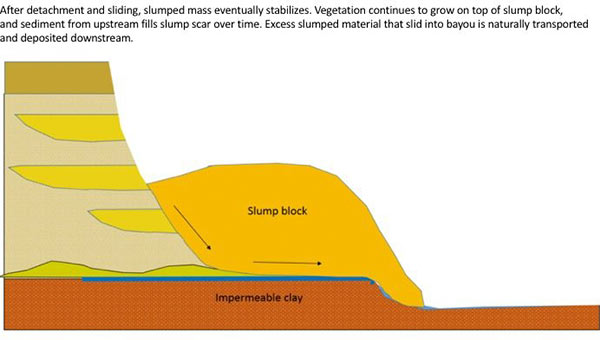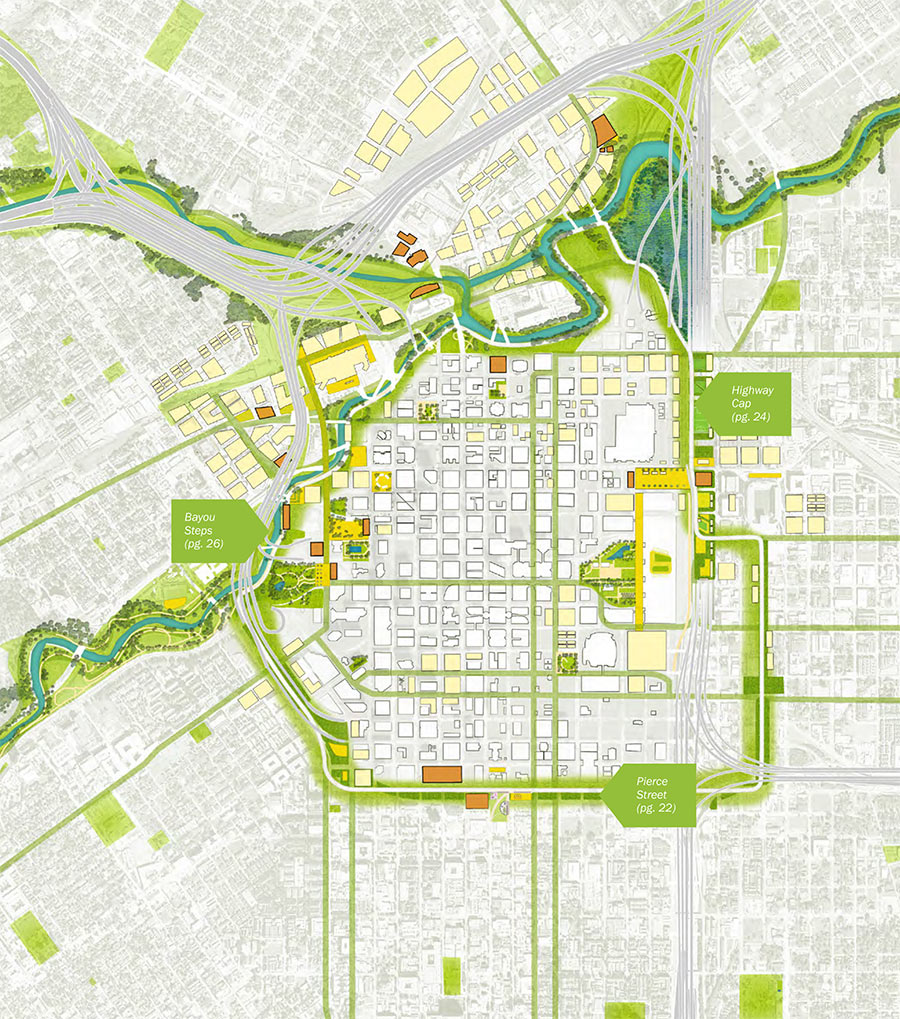
Is Houston ready for yet another loop road? Here’s the proposed Green Loop, a 5-mile network of parks, trails, and other public spaces that the neighborhood supergroups behind Plan Downtown imagine ringing in Houston’s bicentennial — if it’s completed by 2036. One of 10 separate proposals in the plan, the city’s littlest loop is meant to take advantage of TxDOT’s proposed rerouting of I-45 to the east side of Downtown — by wrapping the district tightly with a transportation and recreation circuit that could attract adjacent development and help link the city center to adjacent neighborhoods.
Plan Houston’s new report flags ideas and renderings for 3 spots along Downtown’s proposed Emerald Choker: At Buffalo Bayou, on top of I-69 and I-45 once they’re sunk behind the George R. Brown, and on Pierce St. at the Midtown border.
New buildings at the northwest corner of Downtown would face Buffalo Bayou as well as the surrounding streets, lining the waterfront with flood-worthy attractions:


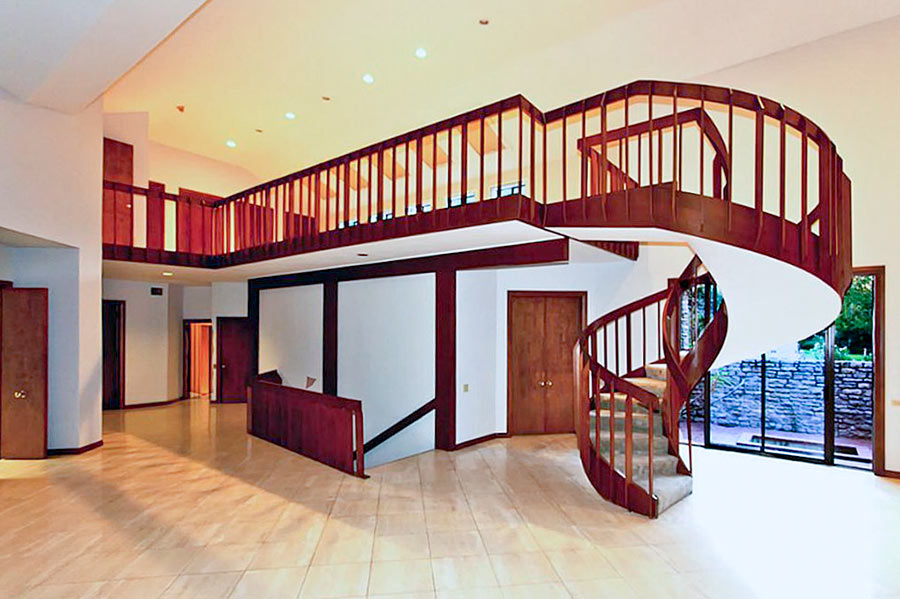 Before the Army Corps of Engineers straightened the section of Buffalo Bayou between Hwy. 6 and Beltway 8 in the mid 1960s, the cul-de-sac at the end of Riverview Dr. in Lakeside Estates wasn’t just near the waterway, it was in it. But the “view” and “side” in the names the subdivision’s developers later attached to the property east of Wilcrest Dr. as they built on it didn’t hold: “When [Allen] Wuescher says he had 17 feet of water inside his house, it’s one of those things you have to see to believe. It is the fifth time in 26 months that his house flooded, and the third time his entire first story was destroyed by water deep enough for a diving board,” writes Meagan Flynn. “
Before the Army Corps of Engineers straightened the section of Buffalo Bayou between Hwy. 6 and Beltway 8 in the mid 1960s, the cul-de-sac at the end of Riverview Dr. in Lakeside Estates wasn’t just near the waterway, it was in it. But the “view” and “side” in the names the subdivision’s developers later attached to the property east of Wilcrest Dr. as they built on it didn’t hold: “When [Allen] Wuescher says he had 17 feet of water inside his house, it’s one of those things you have to see to believe. It is the fifth time in 26 months that his house flooded, and the third time his entire first story was destroyed by water deep enough for a diving board,” writes Meagan Flynn. “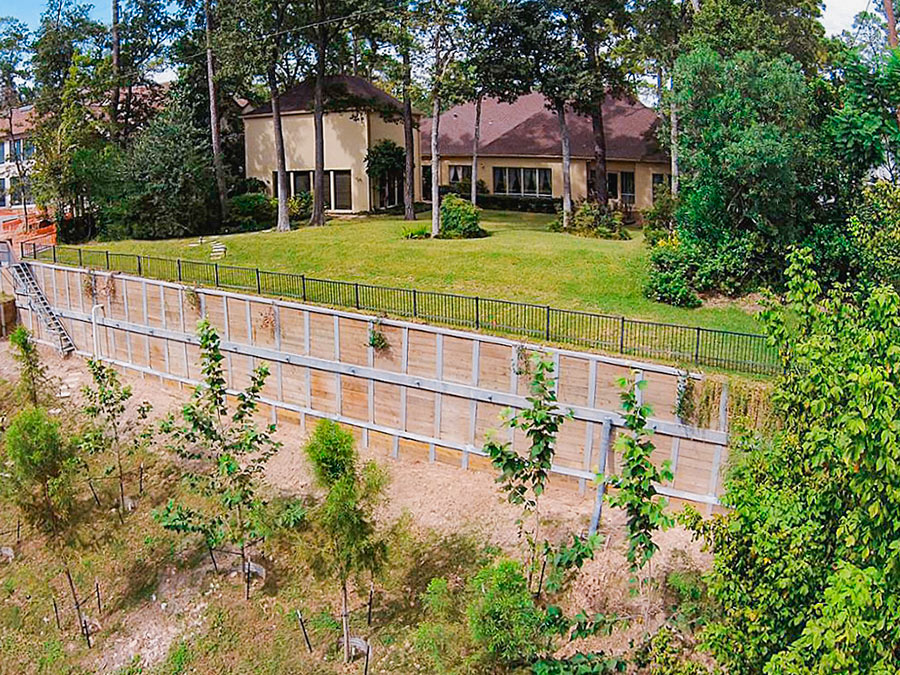
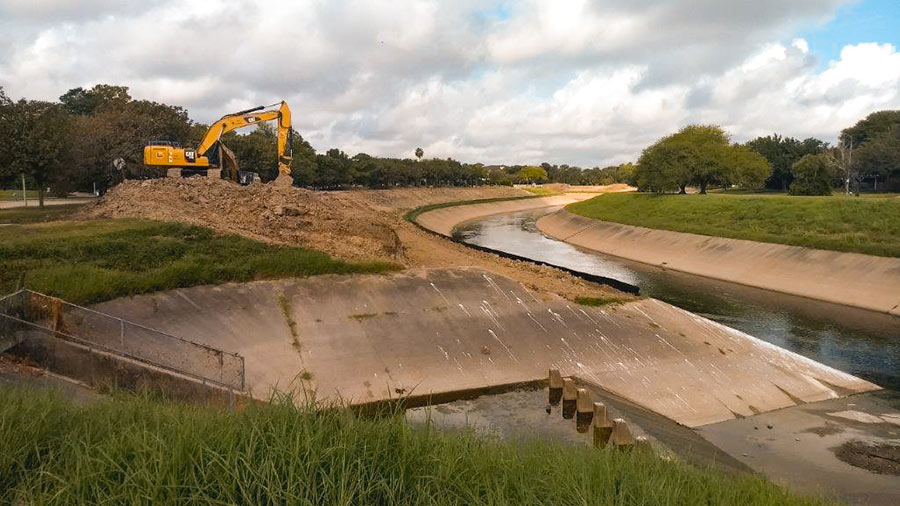
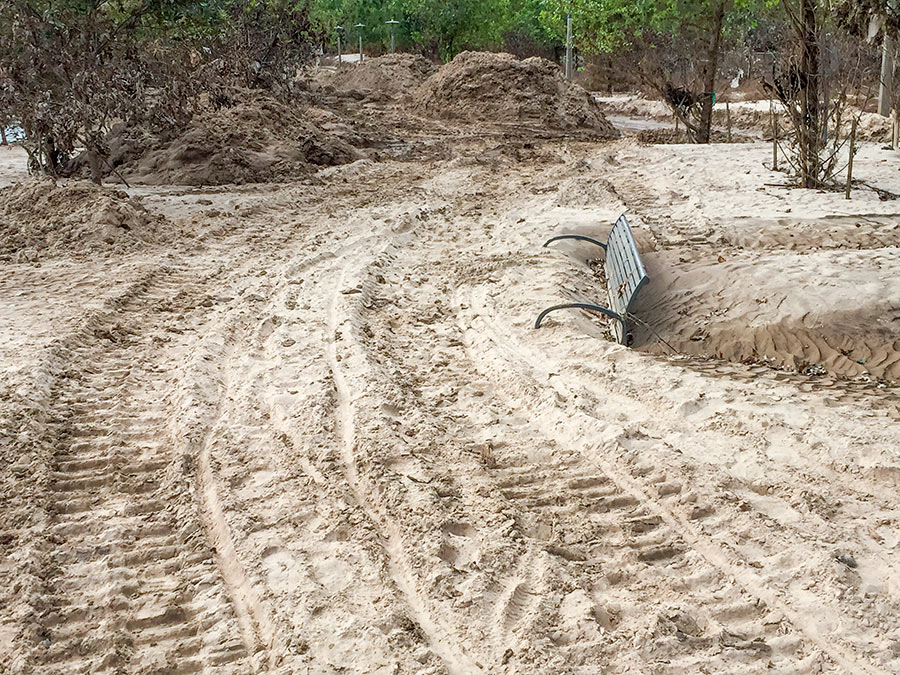
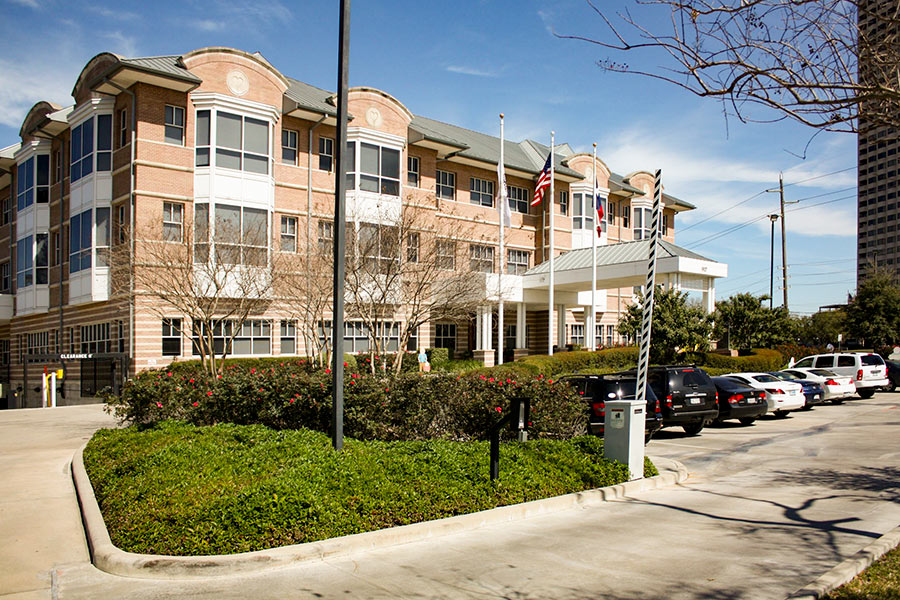
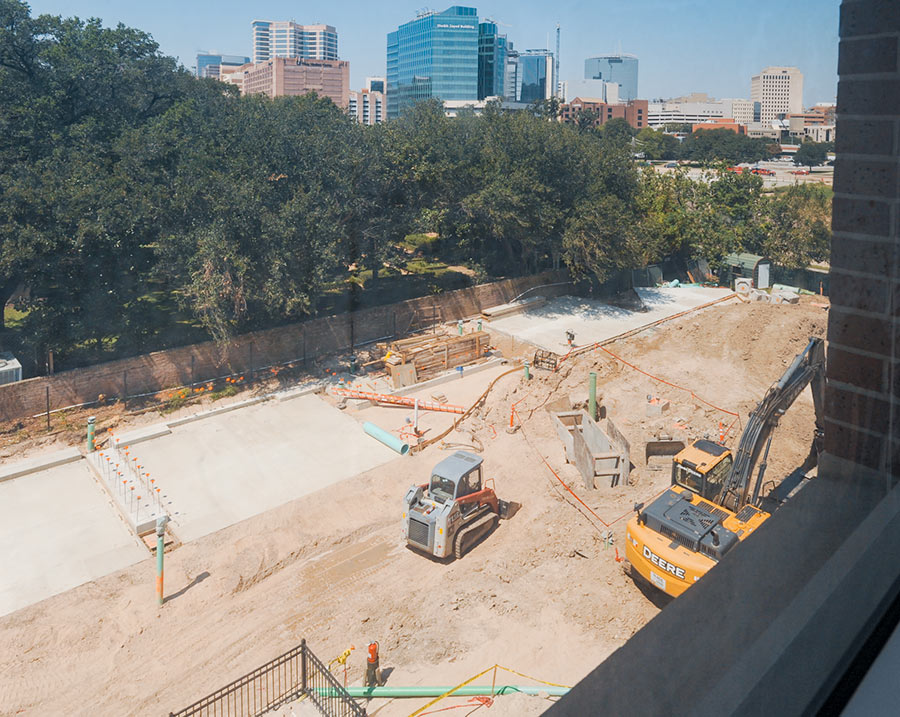
 “Build canals everywhere. Become the American Amsterdam. Rather than a Pierce Elevated park . . . have a canal that can take on additional water from Buffalo Bayou. Canals throughout Montrose, Midtown, Downtown and around Washington. Canals on the East End and through EaDo. Canals near the Med Center to relieve Brays Bayou, and on and on and on again. Give water new dedicated places to go that we can call amenities, and make Houston a more interesting and attractive place to recruit new companies and tourists, because our canals are unique and cool places to hang out. The Dutch know water, so why not copy them.
Then release a ton of GMO mosquitos to kill off the rest of them.” [
“Build canals everywhere. Become the American Amsterdam. Rather than a Pierce Elevated park . . . have a canal that can take on additional water from Buffalo Bayou. Canals throughout Montrose, Midtown, Downtown and around Washington. Canals on the East End and through EaDo. Canals near the Med Center to relieve Brays Bayou, and on and on and on again. Give water new dedicated places to go that we can call amenities, and make Houston a more interesting and attractive place to recruit new companies and tourists, because our canals are unique and cool places to hang out. The Dutch know water, so why not copy them.
Then release a ton of GMO mosquitos to kill off the rest of them.” [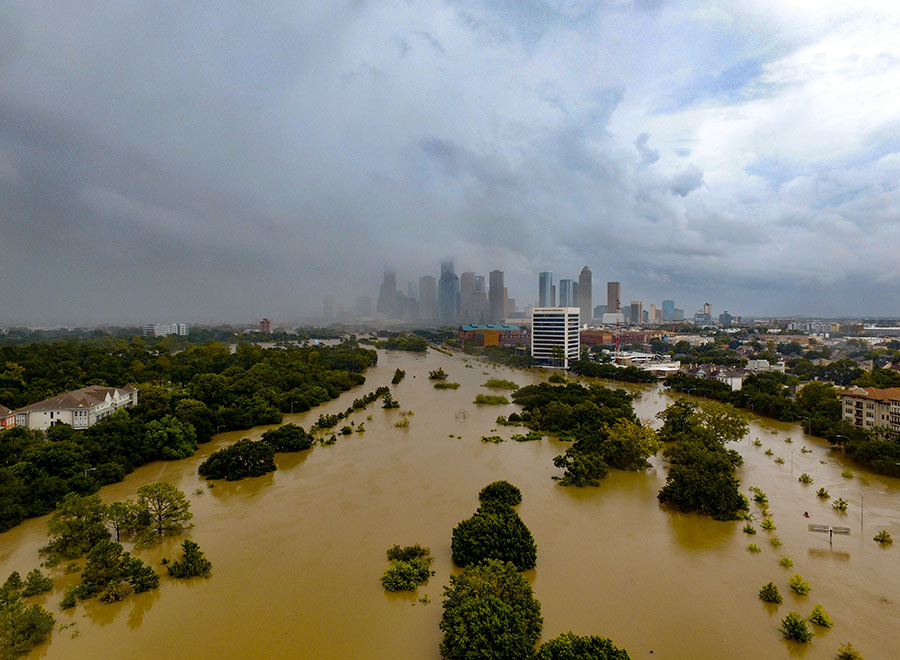 “Please know that Buffalo Bayou Park was designed to flood, although we did not anticipate three historic flooding events in 1-1/2 years,” Buffalo Bayou Partnership president Anne Olson remarks drily in
“Please know that Buffalo Bayou Park was designed to flood, although we did not anticipate three historic flooding events in 1-1/2 years,” Buffalo Bayou Partnership president Anne Olson remarks drily in 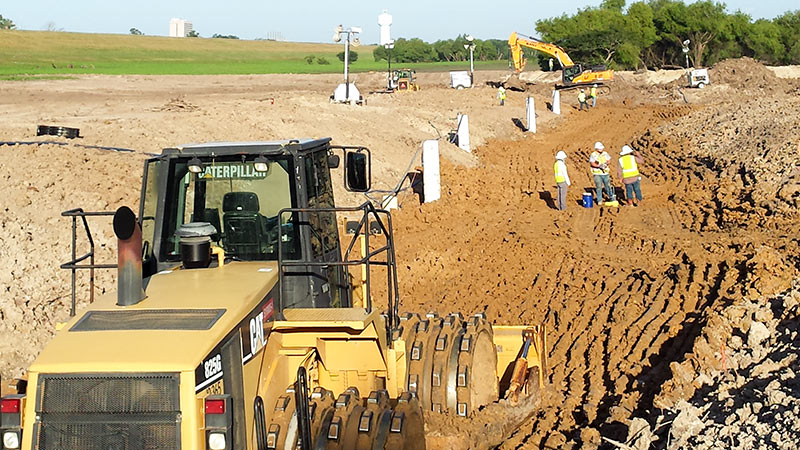 “. . . An undergound aqueduct probably won’t resolve the situation. However, this storm has made it pretty clear that having both Barker AND Addicks draining 100 percent into Buffalo Bayou may not be ideal. An addition channel that would allow USACE to divert some of the Barker outflow to Brays Bayou would allow for some flexibility.
While Brays DID flood during Harvey, the water receded very quickly, with the water back within its banks and falling quickly while Buffalo Bayou was still rising.” [
“. . . An undergound aqueduct probably won’t resolve the situation. However, this storm has made it pretty clear that having both Barker AND Addicks draining 100 percent into Buffalo Bayou may not be ideal. An addition channel that would allow USACE to divert some of the Barker outflow to Brays Bayou would allow for some flexibility.
While Brays DID flood during Harvey, the water receded very quickly, with the water back within its banks and falling quickly while Buffalo Bayou was still rising.” [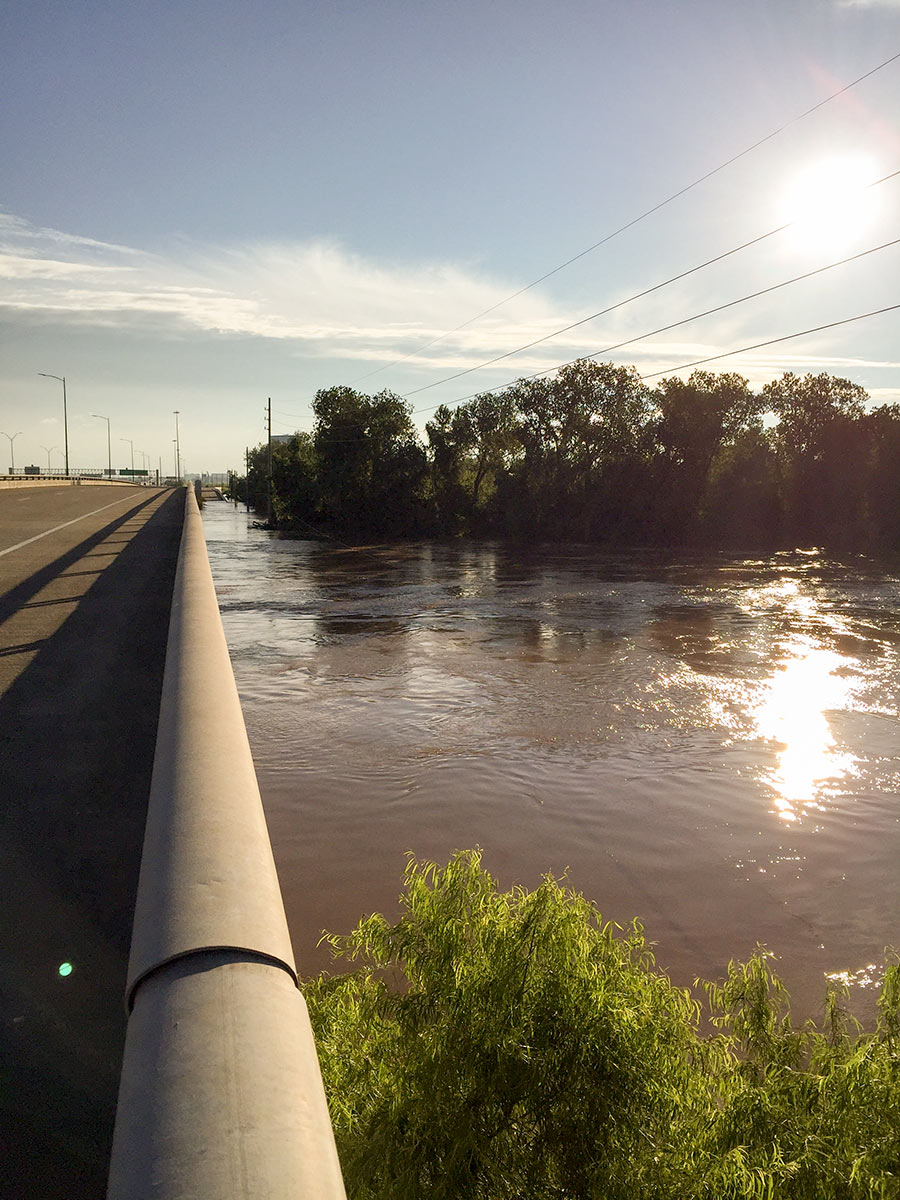 It wasn’t until early this morning that the Brazos River in Sugar Land and Richmond
It wasn’t until early this morning that the Brazos River in Sugar Land and Richmond 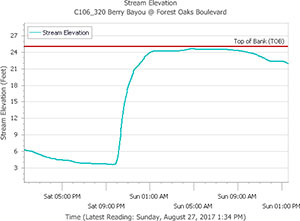 Chronicle features editor Lisa Gray says her Meadowcreek Village home escaped water damage during the flood, but it was close — and many others weren’t so lucky: “Berry Bayou — the middle of which forms my back property line,” she writes, “received more than 45 in. I’ve seen it in national weather-nerd articles where people are marveling how fast a bayou can rise. My husband says we were half an inch away from the bayou coming out of its bank in our back yard. He sent a graph, showing that on Saturday night, at the monitor I can see from my back yard, it was literally at bank level. But the water broke first on the other bank, into the yard of one of my favorite people in the neighborhood, and up and down the yards on that side. Lots of houses flooded. ‘Dry privilege’: That’s the headline of the essay I ought to write.” [
Chronicle features editor Lisa Gray says her Meadowcreek Village home escaped water damage during the flood, but it was close — and many others weren’t so lucky: “Berry Bayou — the middle of which forms my back property line,” she writes, “received more than 45 in. I’ve seen it in national weather-nerd articles where people are marveling how fast a bayou can rise. My husband says we were half an inch away from the bayou coming out of its bank in our back yard. He sent a graph, showing that on Saturday night, at the monitor I can see from my back yard, it was literally at bank level. But the water broke first on the other bank, into the yard of one of my favorite people in the neighborhood, and up and down the yards on that side. Lots of houses flooded. ‘Dry privilege’: That’s the headline of the essay I ought to write.” [